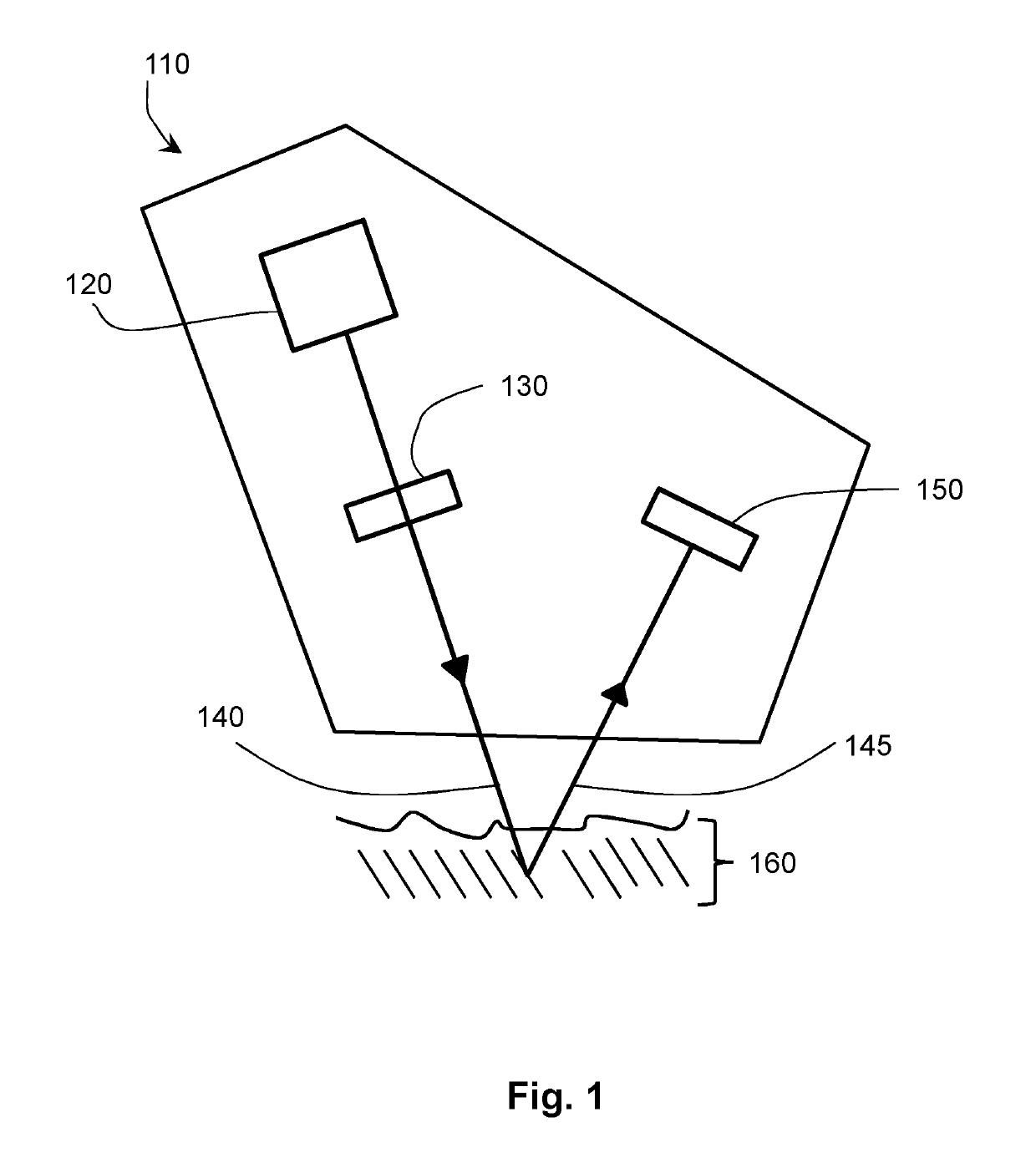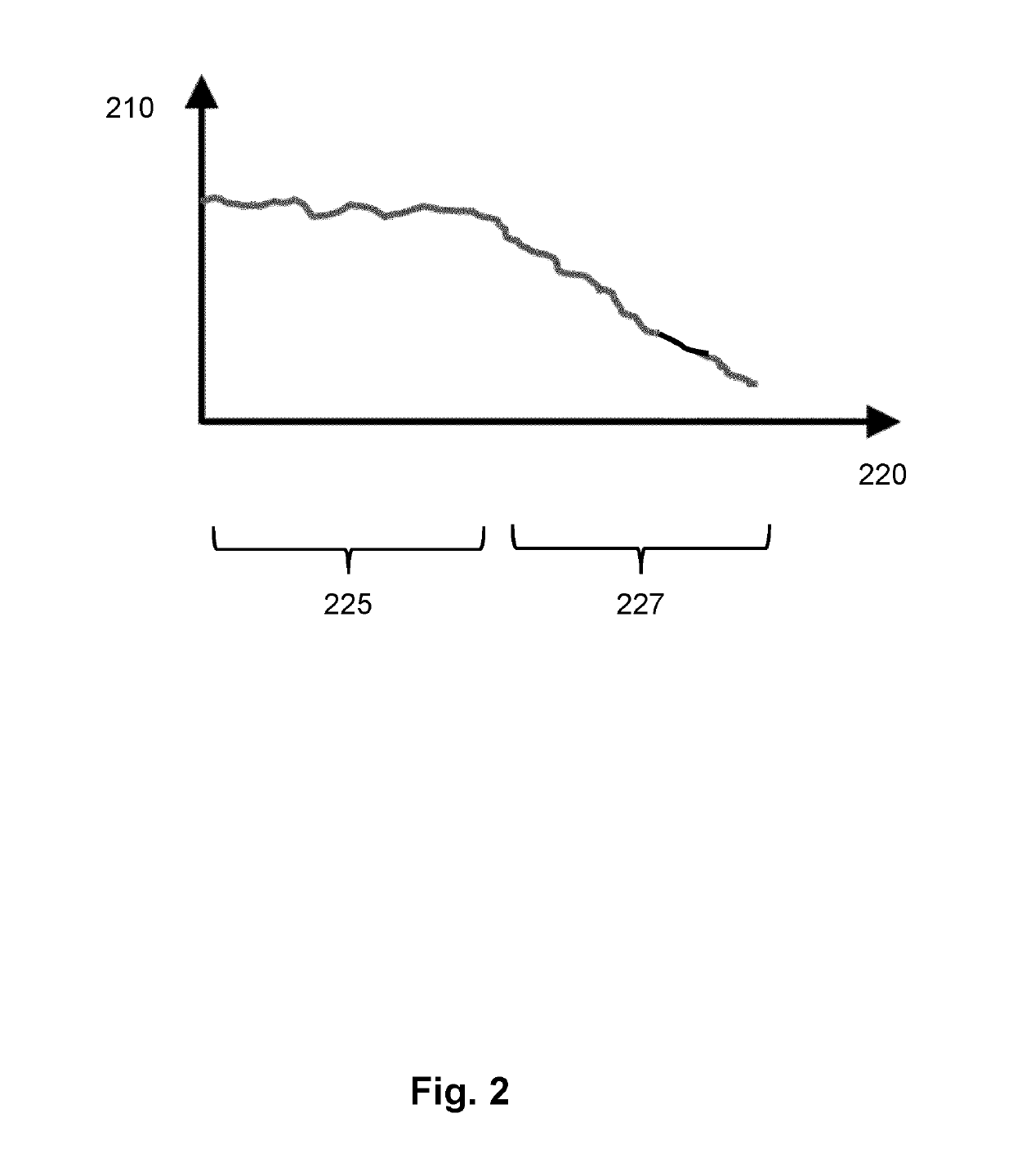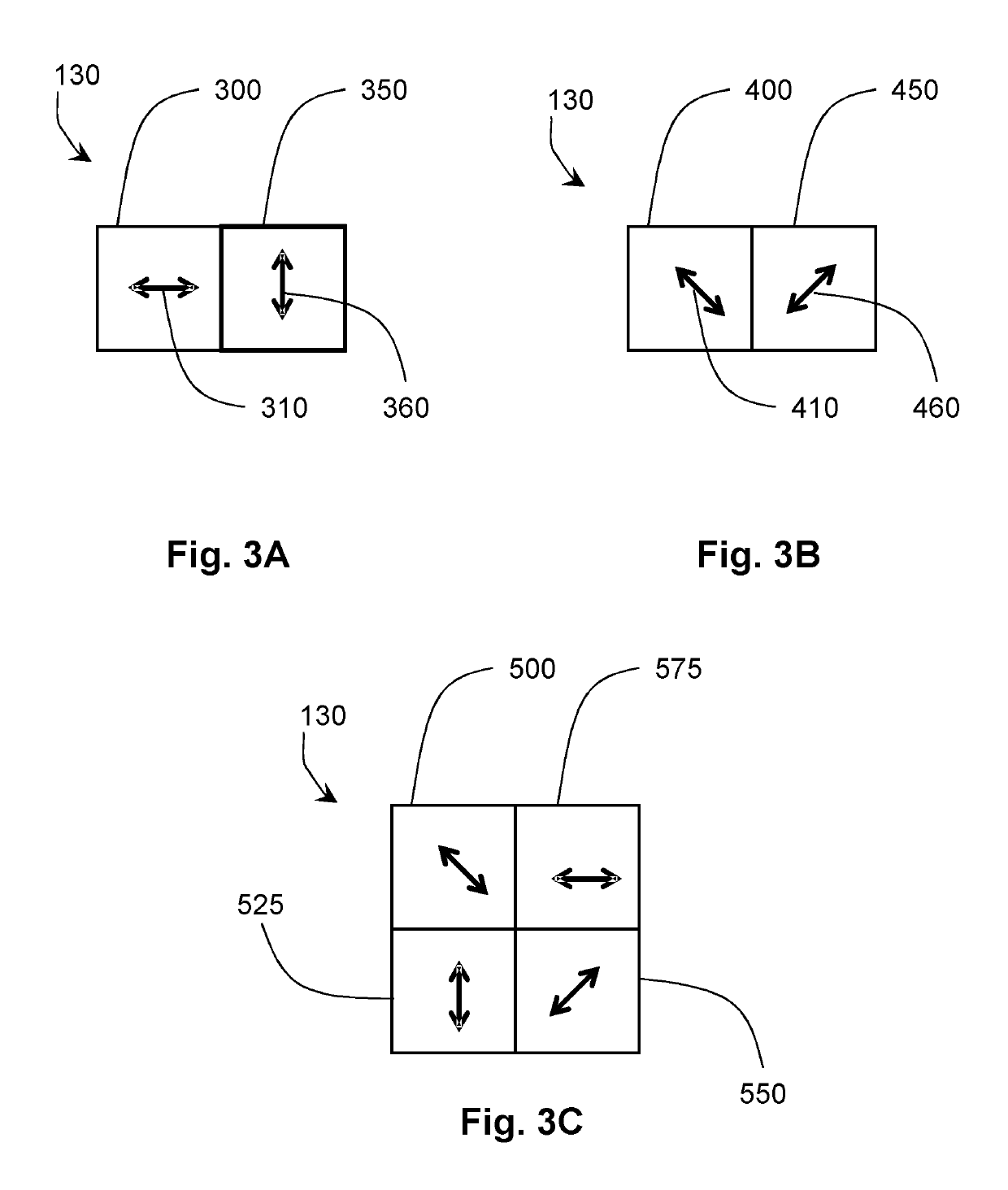Light-based measurement system and a method of collagen denaturation measurement and a skin treatment system
a measurement system and light-based technology, applied in the direction of diagnostic recording/measuring, instruments, therapy, etc., can solve the problems of social downtime, skin scarring or burning, health risks to the person being treated, etc., and achieve the effect of less complex
- Summary
- Abstract
- Description
- Claims
- Application Information
AI Technical Summary
Benefits of technology
Problems solved by technology
Method used
Image
Examples
Embodiment Construction
[0040]FIG. 1 schematically shows a skin measurement system 110 according to the invention. The measurement system 110 is configured and arranged for performing light-based measurement of collagen denaturation inside the skin 160. The measurement system 110 comprises a light source 120 for emitting light via a polarization modulator 130 to a target position inside the skin 160. The light source 120 is preferably a monochromatic source, such as laser or laser diode. A light source 120 with a narrow wavelength range may also be used.
[0041]The polarization modulator 130 is configured and arranged to receive, in use, the light beam emitted by the light source 120, and to spatially modulate a polarization direction of the light beam emitted by the light source, thereby generating a spatially modulated light beam having a spatially modulated polarization direction in a cross-section of the light beam extending perpendicularly to a propagation direction of the light beam. Thus, the polariza...
PUM
| Property | Measurement | Unit |
|---|---|---|
| angle | aaaaa | aaaaa |
| angle | aaaaa | aaaaa |
| angle | aaaaa | aaaaa |
Abstract
Description
Claims
Application Information
 Login to View More
Login to View More - R&D
- Intellectual Property
- Life Sciences
- Materials
- Tech Scout
- Unparalleled Data Quality
- Higher Quality Content
- 60% Fewer Hallucinations
Browse by: Latest US Patents, China's latest patents, Technical Efficacy Thesaurus, Application Domain, Technology Topic, Popular Technical Reports.
© 2025 PatSnap. All rights reserved.Legal|Privacy policy|Modern Slavery Act Transparency Statement|Sitemap|About US| Contact US: help@patsnap.com



